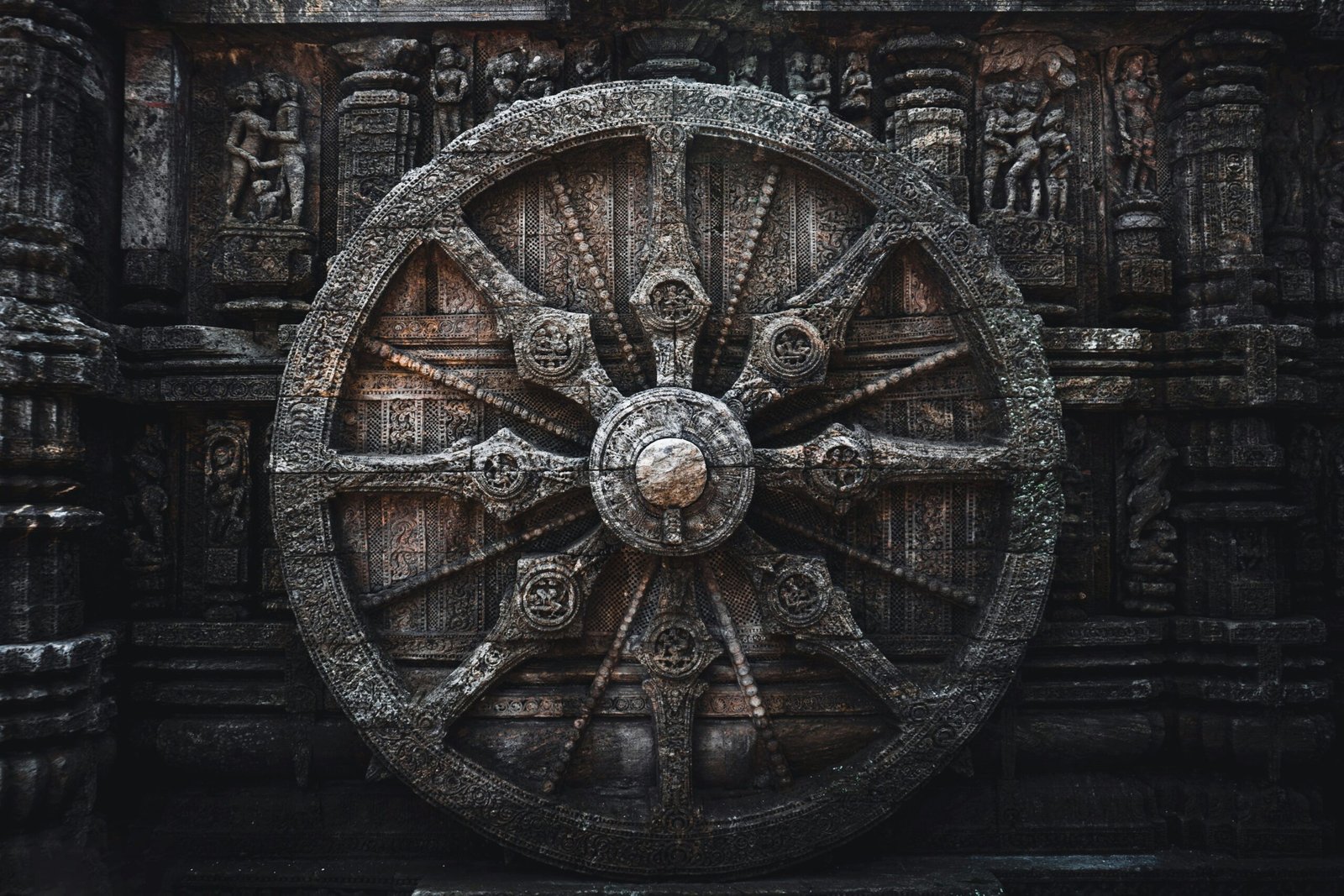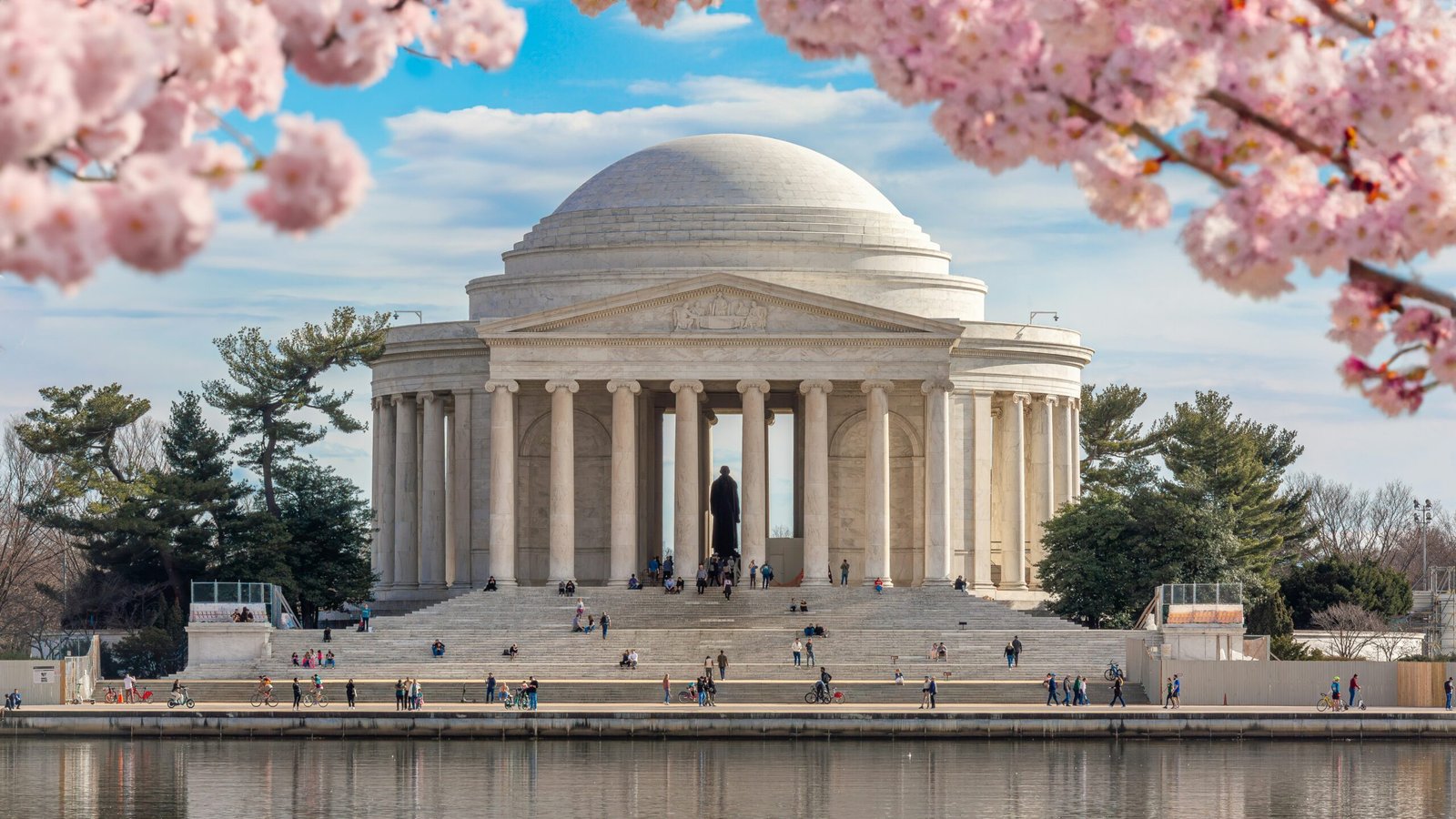Historical Significance of Konark Sun Temple
The Konark Sun Temple, built in the 13th century by King Narasimhadeva I of the Eastern Ganga Dynasty, showcases incredible ancient architecture. Dedicated to Surya, the sun god, this temple reflects the era’s socio-political and religious beliefs. It symbolizes the sun’s importance as the source of life and vitality.
The temple’s intricate carvings highlight the remarkable craftsmanship of that time. Its design features a massive stone chariot with twelve pairs of wheels and seven horses, representing the sun’s journey across the sky. This architectural layout has captivated visitors for centuries and reflects the engineers’ deep knowledge of astronomy.
Konark holds a special place in Odisha’s cultural heritage. It has influenced the region’s art and architecture for generations. During its time, temples like Konark served not only as religious sites but also as centers for social and political gatherings. This dual purpose helped solidify the temple’s historical importance.
Legends surrounding the temple’s construction add to its mystique. One popular tale speaks of the sun god’s wish for a temple that would outshine all others. The temple’s precise alignment with the sun during the equinox further emphasizes the genius behind its design.
Today, the Konark Sun Temple remains a symbol of India’s rich cultural past. It continues to inspire awe with its blend of spiritual significance and architectural mastery. Visitors and scholars alike find this ancient marvel a testament to the artistic and scientific achievements of its time.
Architectural Marvel: Design and Structure


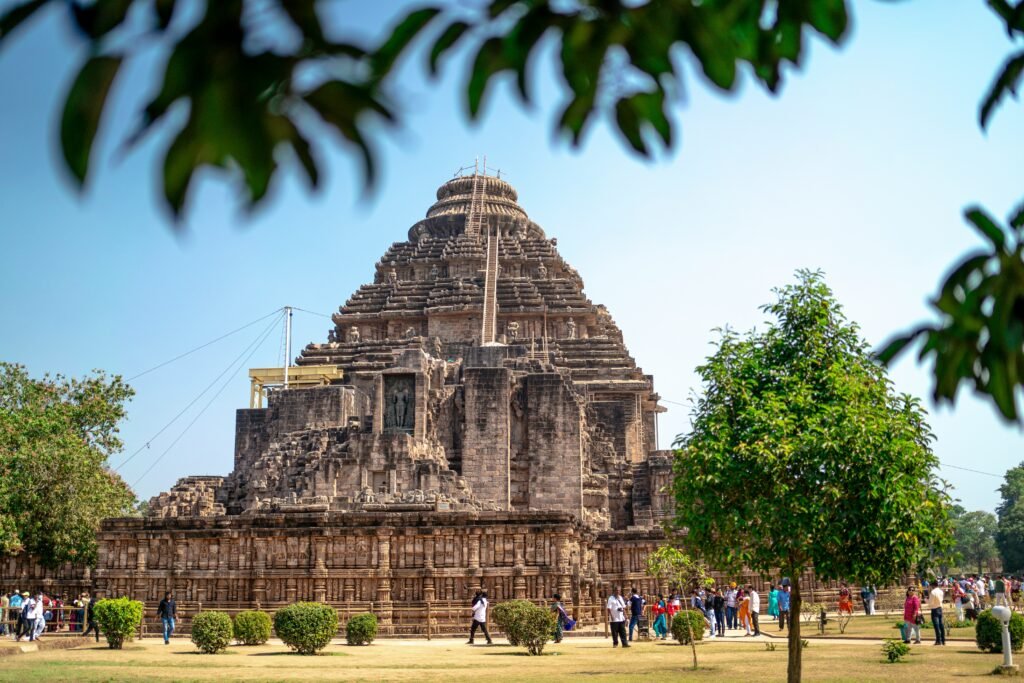
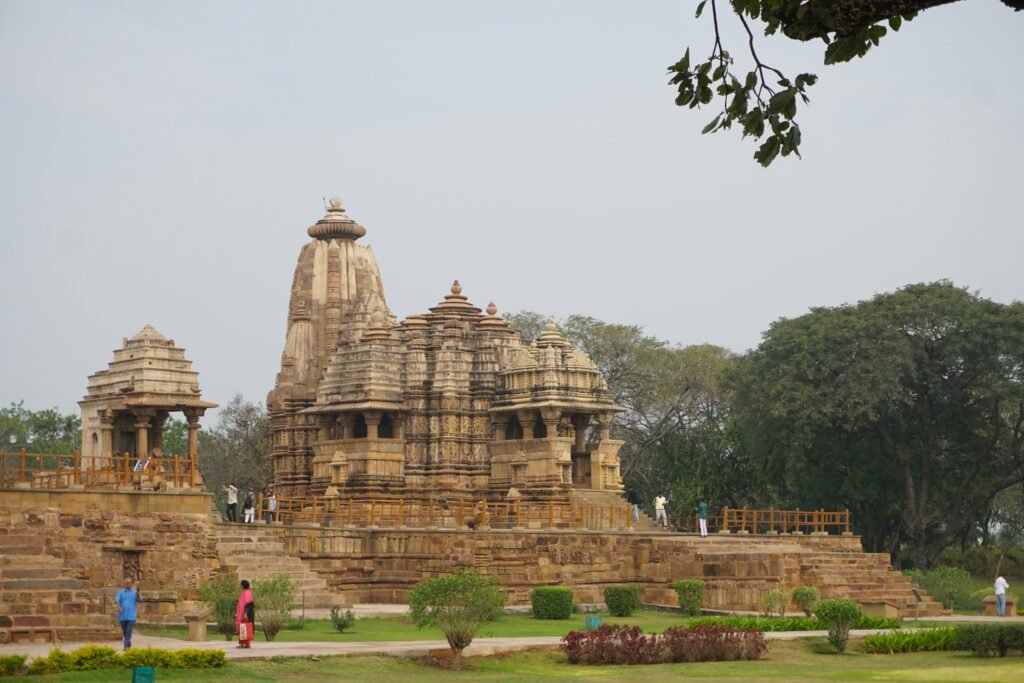
The Konark Sun Temple, built in the 13th century, is a stunning example of ancient Indian architecture. Designed as a massive chariot, it symbolizes the sun god Surya’s journey across the sky. The temple’s grand dimensions, about 231 feet long and 84 feet wide, reflect a deep understanding of geometry and symmetry, adding to its spiritual importance.
Constructed mainly from Khondalite stone, the temple features exquisite sculptures that depict mythological beings, deities, and everyday life in ancient India. The exterior showcases intricately carved wheels, each with a 9-foot radius. These wheels represent solar cycles, symbolizing time, movement, and life.
The temple’s alignment with the east is another remarkable feature. This orientation allows the sun’s rays to illuminate the main sanctum at dawn, emphasizing its dedication to Surya. The design not only highlights the spiritual importance of the sun but also symbolizes enlightenment and the cycle of life.
The carvings throughout the temple reveal the incredible skill of ancient artisans. They depict gods, celestial beings, and scenes from daily life, offering insights into the socio-cultural life of that era. These detailed sculptures celebrate both the spiritual and artistic achievements of the time.
From its chariot design to its intricate carvings, the Konark Sun Temple continues to inspire awe. It stands as a testament to the creativity and spiritual devotion of ancient India, captivating visitors with its rich history and grand architectural beauty.
Art and Symbolism in the Konark Sun Temple



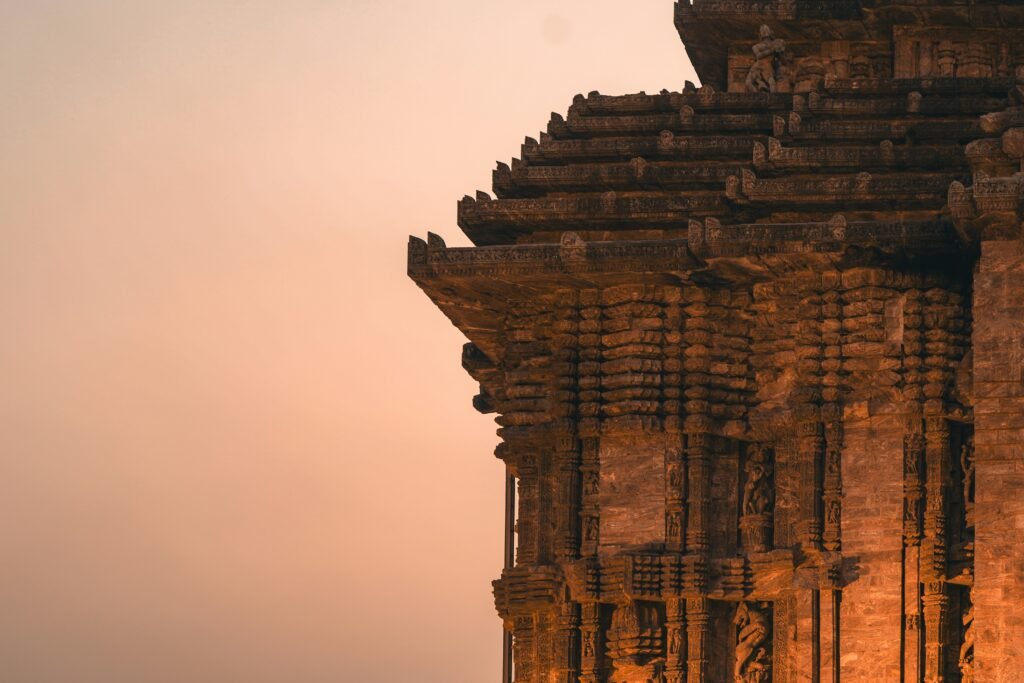
The Konark Sun Temple, a UNESCO World Heritage Site, is famous for its stunning architecture and intricate artistry. Designed as a massive chariot, it symbolizes the sun god Surya’s journey across the sky. The temple’s detailed carvings depict rich narratives from Hindu mythology, reflecting the spiritual beliefs of the time.
Among the most striking features are the sculptures of dancers, warriors, and celestial beings. Each figure is crafted with incredible precision, showcasing the skills of ancient artisans. The dancers, shown in dynamic poses, symbolize the importance of dance in religious rituals. The warriors, on the other hand, represent bravery and strength, reflecting the cultural ideals of heroism and duty during that era.
The temple’s artworks hold deeper meanings beyond their beauty. Floral patterns and geometric shapes, for example, are not just decorative—they express spiritual and philosophical themes of harmony and balance. This blend of art and philosophy reflects the cultural and spiritual values embedded in the temple’s creation.
The Konark Sun Temple’s artistic legacy continues to influence modern Odishan culture. Its historical significance inspires contemporary artists and scholars, making it a powerful symbol of cultural identity. The detailed carvings and sculptures are more than just historical artifacts—they offer insight into the traditions and values that shaped ancient India.
By appreciating the art of the Konark Sun Temple, we gain a deeper understanding of its role as a monument of spiritual and artistic expression. This extraordinary structure stands as a timeless testament to the creativity and devotion of its creators.
Present-day Relevance and Conservation Efforts
The Konark Sun Temple, a UNESCO World Heritage Site, stands as a symbol of India’s rich cultural heritage and architectural brilliance. Its intricate carvings and majestic design attract thousands of tourists each year, making it a major tourist destination. However, with this popularity comes the responsibility of preserving the temple while maintaining its relevance today.
In recent years, efforts to conserve the Konark Sun Temple have increased. Government initiatives, along with partnerships with conservation organizations, aim to combat environmental threats like weather erosion, pollution, and natural disasters. These factors have spurred ongoing restoration projects. Local communities, recognizing the temple’s importance, also contribute to conservation efforts, as many rely on tourism for their livelihood.
Despite these initiatives, challenges remain. Managing the balance between tourism and preservation is critical, as heavy foot traffic can damage the ancient stones. Sustainable tourism practices are key to ensuring that visitors can enjoy the site without harming its structure. Raising awareness among locals about the importance of conservation fosters a sense of responsibility toward protecting this historic monument.
In today’s modern world, the Konark Sun Temple remains a relevant symbol of India’s heritage, drawing attention from across the globe. Preservation efforts must evolve to tackle environmental threats and the pressures of mass tourism. By doing so, the temple can continue to inspire awe and educate future generations about its historical significance while standing strong for years to come.






